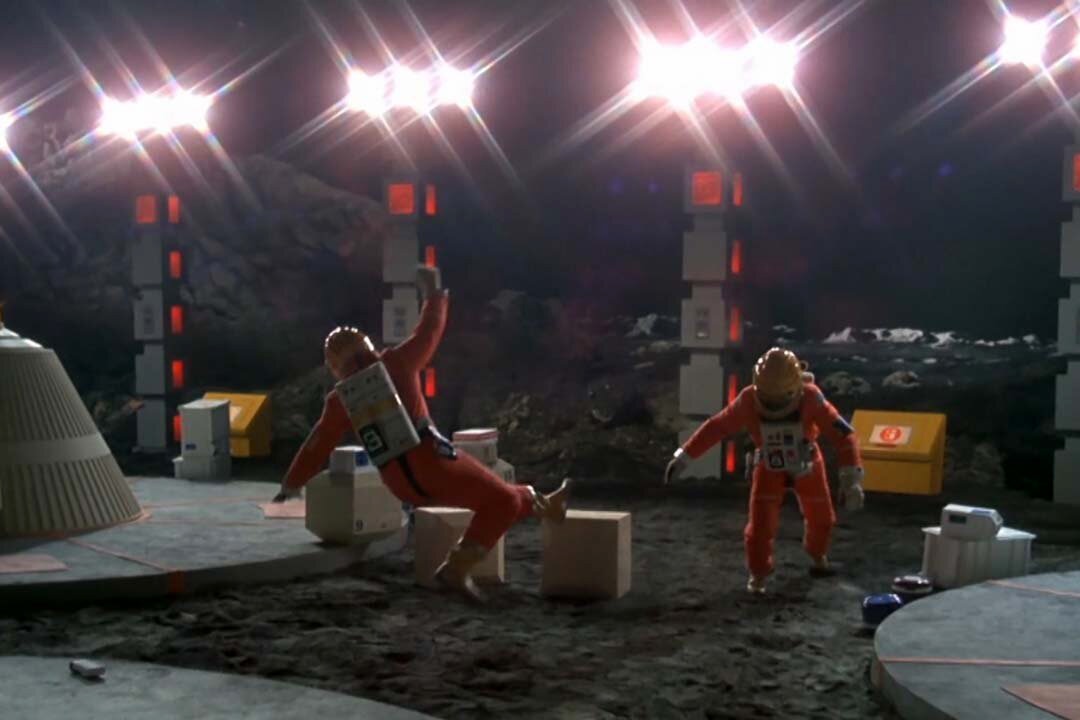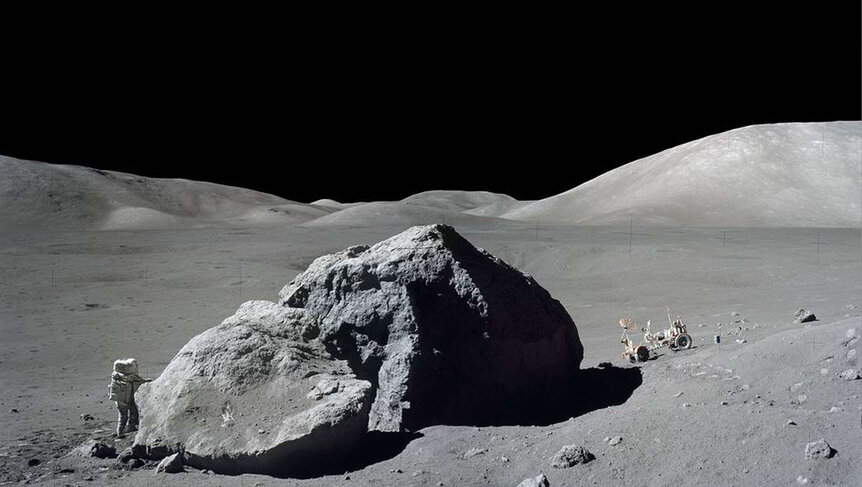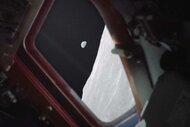Create a free profile to get unlimited access to exclusive videos, sweepstakes, and more!
Scientists Want to Melt the Moon to Make Lunar Roads
Something about this feels wrong.

The race for the Moonis back on with multiple space agencies and private companies pursuing lunar landing missions. If all goes according to plan, the next few decades will see dozens of missions happening on and around the Moon, all at the same time. For the first time in history, we might need a way to manage Moon traffic but, for that, we’re going to need roads.
In a move that admittedly feels a little like putting carpet over hardwood floors, scientists have completed preliminary experiments for a technique to pave lunar roads by melting the Moon’s surface.
Where We’re Going, We DO Need Roads
The Apollo program marked a highpoint in space exploration and taught us a lot about the sorts of activities we could perform in space. NASA successfully carried out six crewed landing missions beginning with Apollo 11 in 1969 and ending with Apollo 17 in December 1972 — catch the story of Apollo 17 in The Last Man on the Moon, streaming now on Peacock!
RELATED: India's Chandrayaan-3 Successfully Lands on the Moon's South Pole
Apollo 17 did the usual lunar science, but it also broke some records for long distance travel on the Moon. Using the Lunar Roving Vehicle (LRV) — commonly called a lunar rover — Apollo 17 astronauts drove 7.6 kilometers (4.7 miles) from the lunar module (LM), the farthest distance anyone has travelled from their home spacecraft on an Extravehicular activity (EVA).
That lunar joyride wasn’t without its challenges, though. During the EVA, the rover lost its rear fender, got covered in Moon dust, and nearly overheated. Astronauts Gene Cernan and Jack Schmitt had to make a replacement fender out of tape, old Moon maps, and clamps to keep the rover operational. Worst of all, they couldn’t even pull over to the side of the road for maintenance because the Moon is all-terrain, all the time.
Plenty of spacecraft have met their deaths at the hands of killer regolith (alien dirt) and managing Moon dust remains a challenge for lunar landing missions. Even as landing craft touch down, their thrusters dislodge literal tons of material, scattering it across the nearby moonscape. The upcoming NOVA-C lunar lander, planned for launch this November, has an experiment purpose designed to investigate the dust plumes created during landing.
One potential solution to the dust problem — as emotionally gross as it may feel — is to pave over parts of the Moon, giving astronauts, their spacecraft, and rovers smooth and reliable paths to travel.
How Scientists Plan to Pave Moon Roads
Getting a cement mixer into orbit and onto the lunar surface probably isn’t the most efficient solution, so scientists have cooked up something a little more fun. The European Space Agency’s (ESA’s) PAVER project tested the ability to melt lunar regolith, transforming it into a solid surface.
Using a 12-kilowatt carbon dioxide later, researchers melted simulated lunar regolith under a bunch of different conditions to find the best way to melt ourselves some Moon roads. One of the challenges was finding the right beam size to melt regolith and allow it to adhere into a larger piece of material. After a number of experiments, they found that a 4.5 centimeter beam achieved the desired effect, resulting in smooth, glass-like material.
RELATED: Russia's Luna-25 Moon Lander Lost Contact, Crashed into the Moon
If implemented on the Moon, the project won’t use a laser at all, that was just a stand in for a heat source in the lab. Instead, we’ll use a large Fresnel lens a few meters in diameter to focus sunlight like a kid with a magnifying glass.
Rather than craft a single large piece of material, researchers melted triangular shapes with relief holes in their centers which act as individual tiles or bricks, interlocking to create a road or landing pad. Using the current method, researchers estimate they could build a 100 square meter landing pad on the Moon, in roughly 115 days.
When they finally do pave a road on the Moon, what do you want to bet they call it Armstrong Street?
The next crewed lunar mission is coming quick; it’s the perfect time to revisit the last lunar mission in The Last Man on the Moon, streaming now on Peacock!




























